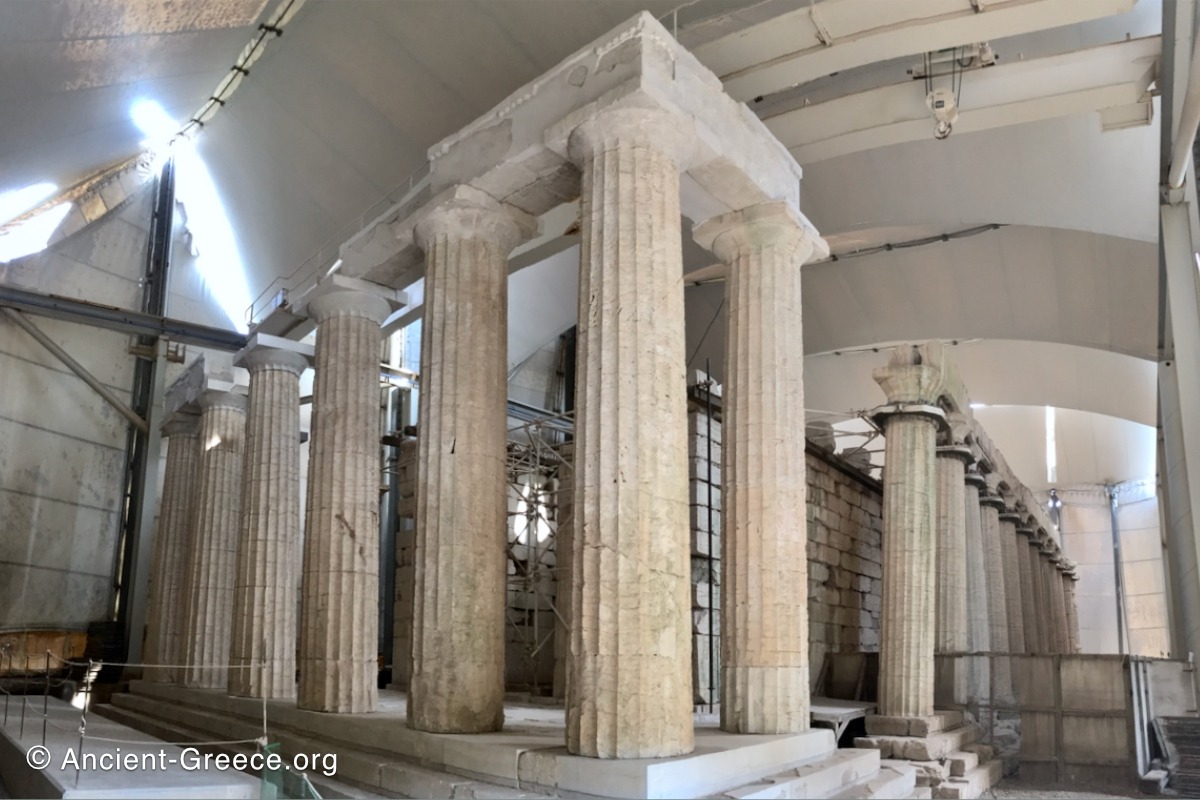
On this page:
Βάσσαι (Bassae, also transilterated as Bassai) is an archaeological site in the Pelopponese which is home to the Classical Era temple of Apollo Epikourios.
The temple of Apollo Epikourios at Bassae of Figaleia still has its colonnade standing to this day, making it one of the best preserved examples of classical architecture.
History of Bassae
The temple was built between 450 – 400 BCE on Ktylion Mountain (elevation 1131m) in a fairly remote place in the Peloponnese. The ancient traveler and author, Pausanias wrote about it in the 2nd c. CE:
” On the mountain is a place called Bassai, and the temple of Apollon Epikourios (the Helper), which, including the roof, is of stone. Of the temples in the Peloponnesos, this might be placed first after the one at Tegea for the beauty of its stone and for its symmetry.
Apollon received his name from the help he gave in time of plague, just as the Athenians gave him the name of Alexikakos (Averter of Evil) for turning the plague away from them.
It was at the time of the war between the Peloponnesians and the Athenians that he also saved the Phigalians, and at no other time; the evidence is that of the two surnames of Apollon, which have practically the same meaning, and also the fact that Iktinos, the architect of the temple at Phigalia, was a contemporary of Perikles, and built for the Athenians what is called the Parthenon. My narrative has already said that the tile image of Apollon is in the market-place of Megalopolis.”
Temple of Apollo Description
It is a temple of the Doric order (6 x 15 columns) measuring 14.5 x 38.3 meters.
To accommodate the limited space on the mountain slope, and deviating from the normal temple orientation of east-west, the Temple of Apollo Epikourios at Bassae is oriented north-south, with its main entrance in the north. An unusually-placed door on the east wall of the cella might be a compromise that allowed the morning light to reach the cult statue inside.
Another unique feature of the temple of Apollo at Bassae is the existence of columns from all three architectural orders. Its peristyle consists of Doric columns, the interior support columns are Ionic, and a single Corinthian column is in the center of the interior. This is the oldest known Corinthian column example to date.
Inside, the temple had a single Ionic frieze with relief sculptures depicting scenes from Athenian battles with Amazons and Lapith fights with Centaurs (now at the British Museum).
Several restorations have taken place to stabilize and repair the temple from damage caused by the passage of elements and man over its 2500-year lifespan. The temple is under a temporary shelter–a tent built in 1987–to minimize the effects of natural erosion while restorations are ongoing.
Temple of Apollo Photos









The temple of Apollo Epikourios at Bassae of Figaleia is protected from the elements under a temporary tent.
Archaeological Site Photos








General views of the archaeological site at Bassae.
Bassae Artifacts from the British Museum
Artifacts from the temple of Apollo Epikourios at Bassae at the British Museum, London, UK.







